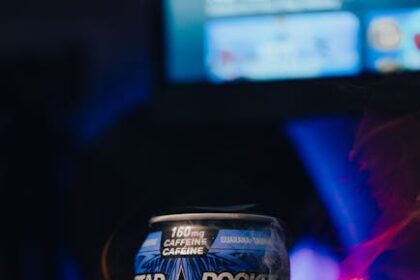Optimizing Facebook ad costs without sacrificing performance is a nuanced discipline, requiring a deep understanding of the platform’s auction dynamics, strategic planning, continuous testing, and meticulous execution. The core objective is not merely to spend less, but to achieve a higher return on ad spend (ROAS) by increasing efficiency and effectiveness across all campaign elements. This involves a multi-faceted approach, addressing everything from audience targeting and creative development to bidding strategies, landing page optimization, and robust data tracking.
Understanding the Facebook Ad Auction and Cost Drivers
Before diving into cost reduction strategies, it’s crucial to grasp how Facebook determines ad delivery and costs. Facebook operates on an auction system, where advertisers bid for the opportunity to show their ads to specific audiences. However, it’s not simply the highest bid that wins. Facebook’s algorithm prioritizes user experience, aiming to show the most relevant ads to its users. The winning ad in the auction is determined by a formula: Advertiser Bid x Estimated Action Rates + User Value (Relevance/Quality).
- Advertiser Bid: This is your explicit bid or what Facebook estimates you’re willing to pay based on your chosen bidding strategy. A higher bid can increase your chances of winning, but it also increases costs.
- Estimated Action Rates: Facebook’s prediction of how likely a user is to take the desired action (e.g., click, purchase) after seeing your ad. High estimated action rates indicate strong ad-to-audience relevance.
- User Value (Relevance/Quality Ranking): This measures how relevant and engaging your ad is to the target audience, reflecting ad quality, post-click experience, and expected positive interactions. Higher relevance reduces costs.
Understanding these components reveals that a high bid isn’t the only path to success. Improving estimated action rates and user value can significantly lower your effective cost per result. Key metrics to monitor include:
- CPM (Cost Per Mille/Thousand Impressions): The cost to show your ad 1,000 times. Influenced by audience competition, seasonality, and ad quality.
- CPC (Cost Per Click): The cost for each click on your ad. Higher relevance and engaging creatives typically lower CPC.
- CPA (Cost Per Acquisition/Action): The cost for each desired conversion (e.g., lead, purchase). This is the ultimate efficiency metric, encompassing CPM, CTR, and conversion rate.
Factors that consistently drive up Facebook ad costs include: high audience competition, ad fatigue (showing the same ad too many times to the same audience), low relevance scores (poor ad-to-audience match), ineffective creatives, a confusing landing page experience, and suboptimal bidding strategies. Addressing these factors systematically forms the backbone of a cost-reduction strategy.
Strategic Foundations for Cost Reduction
Effective cost reduction begins with a solid strategic foundation, ensuring every ad dollar is invested purposefully.
1. Define Clear Objectives and Key Performance Indicators (KPIs)
Ambiguous objectives lead to wasted spend. Before launching any campaign, clearly define what you want to achieve (e.g., website traffic, leads, sales, app installs, brand awareness). Each objective has different cost implications and requires specific optimization strategies.
- Awareness: Focus on reach and impressions (lower CPM often desired).
- Consideration: Drive traffic, video views, engagement (lower CPC, higher engagement rates).
- Conversion: Generate leads, purchases, subscriptions (lower CPA, higher conversion rate).
Aligning your campaign objective in Facebook Ads Manager with your business goal is critical. For instance, if your goal is sales, select a “Conversions” objective and optimize for “Purchases.” This tells Facebook’s algorithm to find users most likely to purchase, rather than just click or engage, leading to more efficient spend for your actual goal.
2. Deep Dive into Target Audience Research and Segmentation
The most common reason for high ad costs is targeting the wrong audience, or targeting too broadly without proper segmentation. Precision targeting ensures your ads reach people most likely to be interested, leading to higher relevance and lower costs.
- Demographics: Age, gender, location, language. Don’t assume; use data from your existing customer base or market research.
- Interests: Go beyond obvious interests. Think about complementary interests, competitor interests, and lifestyle interests that align with your product or service. Layering interests can narrow your audience effectively.
- Behaviors: Purchasing behavior, digital activities, travel patterns.
- Life Events: Birthdays, anniversaries, new parents, moving.
- Psychographics: Values, attitudes, personality traits. This often requires deeper research or leveraging survey data.
Segment your audience based on their stage in the customer journey (e.g., cold audience for awareness, warm audience for consideration, hot audience for conversion). Each segment requires different messaging and ad types, which optimizes relevance and reduces costs for each specific interaction.
3. Optimize the Entire Marketing Funnel
Facebook advertising isn’t just about direct response; it’s about guiding potential customers through a journey. A full-funnel strategy reduces overall acquisition costs by warming up prospects before asking for a conversion.
- Top-of-Funnel (ToFu) – Awareness: Use broad interest targeting or lookalike audiences to introduce your brand/product. Focus on engaging content like short videos or educational articles. Metrics: Reach, impressions, video views. Costs are generally lower here per impression, building brand familiarity.
- Middle-of-Funnel (MoFu) – Consideration: Retarget users who engaged with your ToFu content (website visitors, video viewers, page engagers). Offer more detailed information, case studies, or lead magnets. Metrics: Traffic, lead generation, engagement rate.
- Bottom-of-Funnel (BoFu) – Conversion: Retarget users who showed high intent (added to cart, viewed specific product pages, filled part of a form). Offer strong calls to action, discounts, or urgency. Metrics: Purchases, sign-ups, direct conversions. While CPA might be higher here, the conversion rate is significantly higher, leading to efficient spending on highly qualified prospects.
By building a systematic funnel, you nurture leads, reduce the “cold” friction at the conversion stage, and ultimately lower your blended CPA across the entire customer journey.
4. Strategic Budget Allocation: CBO vs. ABO
How you allocate your budget directly impacts cost efficiency. Facebook offers two primary budget optimization methods:
- Campaign Budget Optimization (CBO): You set a single budget at the campaign level, and Facebook automatically distributes it across your ad sets to get the best overall results.
- Pros: Often more efficient for scaling, as Facebook leverages its machine learning to find the best opportunities across ad sets. Reduces manual optimization time. Can lead to lower overall CPA if ad sets vary significantly in performance.
- Cons: Less control over individual ad set spend. If you have specific spending requirements for certain audiences, CBO might not be suitable without minimum/maximum spend limits per ad set (which can sometimes restrict Facebook’s optimization).
- Best Use Cases: When you have multiple ad sets targeting similar audiences or different stages of the funnel, and you trust Facebook to find the most cost-effective placements. Ideal for testing various creative angles or audience segments within a unified budget goal.
- Ad Set Budget Optimization (ABO): You set individual budgets for each ad set.
- Pros: Provides granular control over spending for each audience or strategy. Easier to test new audiences or creatives in isolation without one ad set consuming the entire budget.
- Cons: Requires more manual monitoring and adjustment. You might overspend on underperforming ad sets or underspend on high-performing ones if not actively managed. Can be less efficient for scaling once you’ve identified winning ad sets.
- Best Use Cases: When testing new strategies, running small-scale experiments, or when you have very specific budget allocations required for different audience segments.
For cost reduction, leveraging CBO once you have validated winning ad sets can often lead to better overall efficiency as Facebook intelligently shifts spend towards the highest-performing opportunities in real-time. For initial testing and discovery, ABO might provide more controlled insights.
Audience Targeting Mastery for Cost Efficiency
Precision in audience targeting is paramount for reducing Facebook ad costs. Every irrelevant impression is wasted money. The goal is to reach the exact individuals most likely to convert, maximizing your return on investment.
1. The Sweet Spot: Specificity vs. Broadness
While highly specific targeting might seem intuitive for cost reduction, it can sometimes limit reach and increase CPM due to smaller audience pools and higher competition for those niche segments. Conversely, overly broad targeting leads to wasted impressions on unqualified individuals. The “sweet spot” often lies in targeting sufficiently large, yet highly relevant audiences.
- Audience Size: For conversion campaigns, an audience of 500,000 to 2-3 million users is often a good starting point. For awareness campaigns, larger audiences are fine.
- Layering: Combine interests, behaviors, and demographics to create highly defined audiences. For example, instead of just “entrepreneurship,” combine “entrepreneurship” AND “small business owner” AND “online shopping behavior.”
- Exclusions: Crucially, exclude audiences that are irrelevant or have already converted. For lead generation, exclude existing customers. For sales, exclude recent purchasers (unless you’re upselling/cross-selling). This prevents wasted spend on users who have already taken the desired action or are not your target.
2. Leveraging Custom Audiences for Retargeting and Lookalikes
Custom audiences are the bedrock of efficient Facebook advertising, allowing you to target people who have already interacted with your business.
- Website Custom Audiences: Created from Facebook Pixel data. Segment visitors by pages visited (e.g., product page viewers, cart abandoners), time spent on site, or specific events (e.g., “Add to Cart,” “Initiate Checkout”). Retargeting these users is highly cost-effective because they already have demonstrated interest. Message them with specific offers or reminders.
- Customer List Custom Audiences: Upload your customer email lists or phone numbers. Facebook matches these to user profiles. Ideal for reactivating past customers, cross-selling, or excluding existing customers from acquisition campaigns. High match rates lead to powerful targeting.
- Engagement Custom Audiences: Target people who have engaged with your Facebook Page, Instagram profile, video content, lead forms, or events. These are warmer prospects than cold audiences and respond better to relevant ads. Use these for nurturing campaigns or moving prospects down the funnel.
3. Optimizing Lookalike Audiences
Lookalike audiences are a powerful tool for scaling campaigns while maintaining efficiency. They allow Facebook to find new users who share similar characteristics with your existing high-value customers or website visitors.
- Source Quality: The quality of your source audience is paramount. Instead of creating a lookalike from all website visitors, create one from “Purchasers” or “Top 25% Website Visitors by Time Spent.” A high-quality source ensures the lookalike audience is genuinely similar to your most valuable users.
- Source Size: For optimal performance, a source audience of at least 1,000 to 50,000 users is generally recommended, with 10,000 being a sweet spot for balance between size and specificity.
- Percentage Selection:
- 1% Lookalike: Most similar to your source, often yielding the best performance but with the smallest reach. Best for initial testing and highly efficient scaling.
- 2-5% Lookalike: Broader, but still highly relevant. Can be good for scaling beyond the 1% while maintaining decent performance.
- 5-10% Lookalike: Broadest, offering maximum reach but potentially diluted relevance. Use cautiously, often layered with interests or behavioral targeting to maintain efficiency.
- Exclusions within Lookalikes: Always exclude your source audience from your lookalike campaigns to avoid overlap and wasted impressions on users who have already converted or are already in your retargeting funnel. For example, when running a 1% lookalike of purchasers, exclude your existing purchaser custom audience.
4. Granular Interest Targeting and Layering
Interest targeting, while seemingly straightforward, requires finesse to be cost-effective.
- Specificity: Instead of broad interests like “Marketing,” consider more specific ones like “Digital Marketing,” “Content Marketing,” or “SEO.”
- Layering (AND Logic): Combine multiple interests using “AND” logic to narrow your audience. For example, “Fitness” AND “Healthy Eating” AND “Yoga.” This creates a more defined segment and reduces wasted impressions.
- Exclusions: Use exclusions to refine your interest audiences. If you’re selling a premium product, you might exclude interests associated with discount shopping.
- Audience Insights Tool: Use Facebook Audience Insights to explore audience demographics, interests, and behaviors of your existing customer base or specific interest groups. This can uncover hidden targeting opportunities.
- Competitor Interests: Target users interested in your competitors’ products or services. These are highly qualified prospects who are already in the market for what you offer.
5. Avoiding Audience Overlap
Running multiple ad sets with overlapping audiences can lead to increased costs and inefficient delivery. When ad sets compete for the same users, it can drive up CPMs because you’re essentially bidding against yourself.
- Facebook’s Overlap Tool: Use the “Audience Overlap” tool in your Audiences section to identify potential conflicts between your custom and saved audiences.
- Strategic Exclusions: If two ad sets target similar users, ensure one excludes the other. For instance, if you have an ad set targeting “Website Visitors (30 days)” and another targeting “Add to Cart (7 days),” make sure the “Website Visitors” ad set excludes the “Add to Cart” audience to avoid showing them a less relevant ad.
- Campaign Structure: Design your campaigns to minimize internal competition. Consider a funnel approach where audiences progress through ad sets, rather than multiple ad sets targeting the same user simultaneously for different outcomes.
By mastering audience targeting, you ensure your ads are seen by the right people at the right time, leading to higher engagement, better conversion rates, and ultimately, lower costs per result.
Creative Optimization for Performance and Cost Efficiency
Your ad creative – the visual and textual elements of your ad – is the direct interface with your audience. High-performing creatives grab attention, resonate with the target user, and drive action, directly impacting estimated action rates and user value, thus lowering costs. Low-quality or irrelevant creatives lead to higher CPMs, lower CTRs, and poor conversion rates.
1. Compelling Ad Copy That Converts
Ad copy isn’t just about describing your product; it’s about connecting with your audience on an emotional or rational level, addressing their pain points, and offering a compelling solution.
- The Hook: The first line of your copy is crucial. It needs to grab attention immediately. Use a question, a bold statement, a surprising statistic, or a direct address.
- Problem-Solution Framework: Clearly articulate the problem your audience faces and then position your product/service as the ideal solution.
- Benefits, Not Features: Focus on what your product does for the customer (benefits) rather than just what it is (features). For example, “Sleep better” (benefit) instead of “Memory foam mattress” (feature).
- Social Proof: Incorporate testimonials, reviews, user-generated content, or mentions of customer numbers. People trust what others say.
- Urgency and Scarcity: If applicable, create a sense of urgency (limited-time offer) or scarcity (limited stock) to encourage immediate action. Use phrases like “Shop now, while supplies last” or “Offer ends soon.”
- Clear Call to Action (CTA): Guide users on what to do next. Use strong action verbs like “Shop Now,” “Learn More,” “Sign Up,” “Download,” “Get Quote.” Ensure the CTA button matches your copy.
- Conciseness: Get to the point. While Facebook allows longer copy, shorter, punchier copy often performs better, especially on mobile. Use bullet points or emojis to break up text and improve readability.
- A/B Testing Copy: Always test different headlines, primary text variations, and CTAs. A small change in wording can significantly impact CTR and conversion rates. Use Facebook’s Dynamic Creative or duplicate ad sets to test.
2. Visually Stunning and Relevant Ad Creatives (Images & Videos)
Visuals are often the first thing people notice. They need to be high-quality, relevant, and “thumb-stopping.”
- High Quality: Blurry, pixelated, or poorly composed images/videos are immediate turn-offs. Invest in professional-grade visuals.
- Relevance: The visual must be directly relevant to your product/service and the message of your ad copy. Disconnects lead to low engagement and higher costs.
- Thumb-Stopping Power: On a crowded feed, your ad needs to stand out. Use bright colors, intriguing angles, human faces (where appropriate), or motion to catch the eye.
- Format Diversity:
- Single Image/Video: Simple, direct. Best for clear, concise messages.
- Carousel Ads: Showcase multiple products, highlight different features, or tell a story sequentially. Highly engaging for e-commerce.
- Collection Ads: Immersive, full-screen mobile experience blending a video/image with multiple product listings. Great for product discovery.
- Instant Experiences (Canvas Ads): Full-screen, post-click landing page within Facebook. Highly customizable and immersive. Can keep users on platform, reducing load times.
- Stories/Reels: Vertical video format, native to how many users consume content. Authentic, less polished content often performs well here.
- A/B Testing Visuals: Test different image types (product-focused, lifestyle, user-generated), video lengths, thumbnails, and even different people/scenes within videos.
- Mobile-First Design: The vast majority of Facebook users access the platform on mobile. Ensure your creatives are optimized for mobile viewing – vertical videos, clear text, easy-to-read fonts.
3. Ad Format Selection for Objective Alignment
Choosing the right ad format is crucial for cost efficiency. Different formats excel at different objectives.
- Video Ads: Excellent for awareness and consideration. Can convey complex messages quickly, build brand affinity, and are highly engaging. Measure video views, watch time, and engagement rates. Longer videos (60-90 seconds) for educational content, shorter (15-30 seconds) for quick hooks and direct response.
- Image Ads: Versatile for all funnel stages. Simpler to produce than video. Great for clear product showcases or striking visuals.
- Carousel Ads: Ideal for showcasing product variations, telling a sequential story, or highlighting multiple benefits. Can increase CTR by giving users more to interact with.
- Lead Ads (Instant Forms): Great for lead generation without requiring users to leave Facebook. Can significantly reduce CPL because of reduced friction.
- Dynamic Product Ads (DPAs): For e-commerce, these are highly cost-efficient retargeting tools. They automatically show relevant products to users who have viewed them on your website. High conversion rates due to personalized nature.
4. Dynamic Creative for Automated Optimization
Facebook’s Dynamic Creative allows you to upload multiple images, videos, headlines, descriptions, and call-to-action buttons. Facebook then automatically generates combinations and serves the best-performing ones to your audience, optimizing for results.
- Benefits: Reduces manual testing, speeds up optimization, helps identify winning creative elements faster. Can lead to lower costs by continually showing the most effective combinations.
- How to Use: Enable Dynamic Creative at the ad set level. Upload various creative assets, and Facebook will do the heavy lifting. Monitor which combinations perform best to inform future campaigns.
5. User-Generated Content (UGC) and Authenticity
UGC often outperforms polished, branded content because it feels more authentic and trustworthy.
- Leverage UGC: Encourage customers to share their experiences with your product/service. Use these in your ads (with permission).
- Authenticity: Even if not strictly UGC, strive for ads that feel genuine and relatable rather than overly corporate. This builds trust and rapport with the audience.
By continuously testing and refining your ad creatives, you enhance their relevance and appeal, leading to higher engagement rates and ultimately, lower costs per desired action. Ad fatigue is also a real factor; regularly refreshing your creative assets prevents performance decay and keeps your audience engaged.
Bidding Strategies and Budget Optimization
How you bid and manage your budget directly influences your ad costs and overall performance. Choosing the right bidding strategy for your objective and carefully managing your budget ensures efficient spend.
1. Understanding Facebook’s Bidding Options
Facebook offers several bidding strategies, each suited for different scenarios:
- Lowest Cost (Default): This is the most common and often recommended strategy. Facebook aims to get you the most results for your budget, spending your entire daily budget without a specific cost cap.
- Pros: Generally the easiest to set up, good for maximizing volume, and often the best for new campaigns or when you’re looking for scale. Facebook’s algorithm has the most flexibility here.
- Cons: Less control over your average CPA. If competition is high, costs can fluctuate significantly.
- Best Use Cases: Most campaigns, especially those focused on generating as many results as possible within a given budget, and for scaling.
- Cost Cap: You set an average target cost per result, and Facebook tries to keep your average cost per result at or below this cap.
- Pros: Gives you more control over your CPA. It ensures you don’t overspend per result.
- Cons: Can limit delivery if your cap is too low, as Facebook might struggle to find enough opportunities within your specified cost. Requires sufficient historical data to set an effective cap.
- Best Use Cases: When you have a clear target CPA and need to maintain profitability, or when scaling successful campaigns that have a predictable cost per result. Start with your target CPA, then adjust up slightly if delivery is limited.
- Bid Cap: You set a maximum bid per auction. Facebook will not bid higher than this amount.
- Pros: Provides granular control over the maximum you’re willing to pay per impression or desired action. Can be effective in highly competitive niches where you want to limit overspending.
- Cons: Very easy to under-deliver if your bid cap is too low, as you might not win enough auctions. Requires a deep understanding of auction dynamics and competitor bids.
- Best Use Cases: Advanced advertisers with specific knowledge of optimal bid amounts, or in situations where you want to severely restrict your cost per impression (e.g., brand awareness, high volume at extremely low costs). Generally less recommended for conversion-focused campaigns unless you have a very specific reason.
- ROAS Cap (Return on Ad Spend Cap): You set a minimum ROAS goal, and Facebook optimizes to achieve results that meet or exceed this goal.
- Pros: Directly links ad spend to revenue, ideal for e-commerce or lead generation where the value of a conversion is known.
- Cons: Can significantly limit delivery if the ROAS cap is too high. Requires accurate conversion value tracking and sufficient conversion volume for the algorithm to learn effectively.
- Best Use Cases: E-commerce businesses or businesses with clear revenue tracking per conversion.
2. Testing Bidding Strategies
Don’t stick to one bidding strategy indefinitely. Experiment to find what works best for your specific campaign objectives, audience, and budget.
- Start with Lowest Cost: For most new campaigns, begin with Lowest Cost to allow Facebook’s algorithm to explore and learn the most efficient delivery paths.
- Transition to Cost Cap/ROAS Cap: Once your campaign has achieved a stable volume of conversions (ideally 50 conversions per week per ad set for optimal learning), consider switching to Cost Cap or ROAS Cap if you need more control over your average CPA/ROAS. Gradually increase your cap if delivery drops.
- Incrementally Adjust: When adjusting bid caps or cost caps, make small, incremental changes (e.g., 5-10% at a time) and observe the impact on delivery and cost before making further adjustments.
3. Budget Management: CBO vs. ABO – Optimal Use Cases Revisited
As discussed in the strategic foundations, the choice between CBO and ABO significantly impacts how your budget is spent across ad sets.
- For Initial Testing (ABO): When testing new audiences, creatives, or offers, use ABO. This allows you to allocate specific budgets to each test variant, ensuring each gets enough spend to gather meaningful data without one variant consuming the entire budget prematurely. It provides clearer, isolated insights into what’s working.
- For Scaling (CBO): Once you’ve identified winning ad sets (audiences + creatives), transition to CBO. Set your budget at the campaign level, and let Facebook’s algorithm dynamically allocate spend to the best-performing ad sets. This typically leads to lower overall CPA as Facebook finds the most efficient opportunities across your winning combinations.
- Minimum/Maximum Spends in CBO: If you must ensure a certain amount of spend for a specific ad set within a CBO campaign (e.g., a retargeting audience that needs consistent reach), you can set minimum and maximum daily or lifetime spend limits for individual ad sets within the CBO campaign. Use this sparingly, as it can hinder Facebook’s optimization capabilities.
4. Daily vs. Lifetime Budget
- Daily Budget: Spends approximately the set amount each day. Offers more flexibility for day-to-day adjustments and ongoing campaigns. Facebook can spend up to 25% more on certain days if it finds good opportunities, balancing out over the week.
- Lifetime Budget: Spends the set amount over the entire duration of the campaign. Facebook can optimize spend across days, potentially spending more on days with higher performance predictions. Good for fixed-duration campaigns or event promotions.
- Benefit for Cost Reduction: With Lifetime Budget, you can implement Ad Scheduling (Dayparting). This allows you to specify certain hours or days when your ads will run. If your audience is most active or converts best during specific times, limiting ad delivery to those periods can significantly reduce wasted spend during low-performance hours. For example, a B2B service might only run ads during business hours on weekdays.
5. Budget Scaling: Gradual Increments
When a campaign or ad set is performing well, the temptation is to drastically increase the budget. However, sudden, large budget increases can destabilize the algorithm, leading to higher costs and decreased performance.
- Incremental Scaling: Increase your budget gradually. A common rule of thumb is to increase the daily budget by 10-20% every 2-3 days. This allows Facebook’s algorithm to adjust and re-optimize without disrupting performance significantly.
- Monitor Learning Phase: Each time you make a significant change (budget, audience, creative), your ad set might re-enter the “learning phase.” During this phase, performance can be less stable as Facebook gathers data. Avoid making too many changes or large budget increases during this period. Aim for at least 50 conversions per ad set per week to exit the learning phase.
By thoughtfully selecting and testing bidding strategies, and meticulously managing your budget, you can empower Facebook’s algorithm to find the most cost-effective path to your desired results, ensuring every dollar spent delivers maximum value.
Landing Page and Conversion Rate Optimization (CRO)
Even the most perfectly targeted and creative Facebook ad can fail if the user experience post-click is poor. The landing page is where the conversion happens, and optimizing it for performance directly impacts your Cost Per Acquisition (CPA) by increasing the percentage of ad clicks that turn into desired actions. This is often an overlooked but critical component of reducing Facebook ad costs without sacrificing performance.
1. Seamless User Experience: Speed and Mobile Responsiveness
First impressions matter. A slow-loading or clunky landing page will drive users away, wasting your ad spend.
- Page Load Speed: Crucial for mobile users, who are the majority of Facebook traffic. Use tools like Google PageSpeed Insights or GTmetrix to analyze and improve your load times. Optimize image sizes, leverage browser caching, and minimize redirects. Every second counts.
- Mobile Responsiveness: Your landing page must be perfectly optimized for mobile devices. Buttons should be tappable, text readable without pinching, and forms easy to fill out. A desktop-first design will alienate mobile users and inflate your CPA. Test on various devices.
- Intuitive Navigation (or lack thereof): For dedicated landing pages, often less is more. Remove unnecessary navigation menus that can distract users from the primary conversion goal. Guide them directly to the CTA.
2. Message Match: Consistency from Ad to Landing Page
There should be a clear, consistent message from your Facebook ad to your landing page. Any disconnect creates confusion and reduces trust, leading to higher bounce rates.
- Headline Consistency: The headline on your landing page should ideally mirror or directly relate to your ad’s headline or primary message.
- Offer Alignment: If your ad promises a specific discount or free trial, that offer must be immediately visible and accessible on the landing page.
- Visual Consistency: Use similar branding, colors, and imagery on your landing page as you do in your ad creative. This reinforces brand recognition and provides a cohesive experience.
- Problem-Solution Flow: If your ad highlighted a specific problem, the landing page should continue that narrative, elaborating on how your solution addresses it.
3. Clear and Prominent Call to Action (CTA)
Your CTA tells the user exactly what you want them to do. It needs to be unambiguous and easy to find.
- Visibility: Make your CTA button stand out with a contrasting color. Place it above the fold (visible without scrolling) where possible, and repeat it at logical points throughout longer pages.
- Concise and Action-Oriented Text: Use strong verbs: “Shop Now,” “Get My Free Guide,” “Sign Up,” “Claim Your Discount.” Avoid generic phrases like “Click Here.”
- Single Primary CTA: For optimal conversion, a landing page should typically have one clear primary action you want the user to take. Secondary CTAs (e.g., “Learn More”) should be less prominent.
4. Build Trust and Credibility
Users are wary of unfamiliar websites. Build trust quickly to encourage conversion.
- Social Proof: Display testimonials, customer reviews, star ratings, and logos of reputable clients or media mentions. Quantifiable social proof (e.g., “Trusted by 10,000+ customers”) is powerful.
- Security Signals: For e-commerce or sensitive data collection, display security badges (SSL certificate, payment processor logos).
- Privacy Policy/Terms of Service: Link to these in the footer. While not directly read by most, their presence signals professionalism.
- Clear Contact Information: Showing an accessible way to contact support (phone, email, chat) builds confidence.
- Money-Back Guarantees/Return Policies: Clearly state any guarantees or policies that reduce perceived risk for the customer.
5. Minimize Distractions and Optimize Forms
Every element on your landing page should serve the conversion goal.
- Remove Unnecessary Elements: Eliminate pop-ups, excessive navigation links, or extraneous information that doesn’t contribute to the immediate conversion.
- Streamline Forms: If you’re collecting leads, reduce the number of form fields to the absolute minimum required. The fewer fields, the higher the conversion rate. Only ask for information you genuinely need at that stage.
- Inline Validation: Provide real-time feedback if a user makes an error in a form field.
- Clear Labels and Placeholder Text: Ensure form fields are clearly labeled and provide hints for data entry (e.g., “Enter your email address”).
6. A/B Testing Landing Pages and Iterative Improvement
CRO is not a one-time task; it’s an ongoing process of testing and refinement.
- Hypothesis-Driven Testing: Formulate a hypothesis (e.g., “Changing the CTA button color to orange will increase conversions by 10%”) and test specific elements: headlines, CTAs, button colors, images, form layout, trust signals, page sections.
- Tool Usage: Use tools like Google Optimize, Optimizely, or built-in A/B testing features in your website builder to run controlled experiments.
- Statistical Significance: Ensure your tests run long enough and gather enough data to reach statistical significance before making definitive conclusions.
- Focus on Impact: Prioritize tests that have the potential for the biggest impact on your conversion rate.
7. Robust Tracking Setup: Pixel and Conversions API
Accurate conversion tracking is the bedrock of Facebook ad optimization and cost reduction. Without it, Facebook’s algorithm cannot learn and optimize effectively for your desired actions, leading to wasted spend.
- Facebook Pixel: Ensure your Facebook Pixel is correctly installed on all relevant pages of your website. Verify that standard events (Page View, View Content, Add to Cart, Initiate Checkout, Purchase) are firing correctly.
- Custom Events: For specific actions not covered by standard events (e.g., “form submitted,” “video played on site”), set up custom events with relevant parameters (e.g., value, currency).
- Conversions API (CAPI): In the post-iOS 14 era, relying solely on the Pixel is insufficient due to browser-side tracking limitations. Implement the Conversions API to send server-side conversion data directly to Facebook. This creates a more reliable and complete dataset, improving ad delivery and measurement accuracy, which directly translates to better optimization and lower costs.
- Event Deduplication: If using both Pixel and CAPI, ensure proper event deduplication is set up to prevent double-counting conversions. This is crucial for accurate reporting and optimization.
- Aggregated Event Measurement (AEM): Due to Apple’s App Tracking Transparency (ATT) framework, configure Facebook’s Aggregated Event Measurement. This allows you to prioritize up to 8 conversion events per domain, helping Facebook optimize within privacy limitations.
- Value Optimization: For e-commerce, pass conversion values (e.g., purchase amount) with your Purchase events. This allows Facebook to optimize for “value” rather than just “volume” of purchases, helping you achieve a higher ROAS.
By relentlessly optimizing your landing page and ensuring your tracking is impeccable, you can significantly improve your conversion rates. A 1% increase in conversion rate can have a dramatic effect on your CPA, effectively reducing your ad costs without needing to change your ad spend.
Advanced Strategies & Troubleshooting for Sustained Cost Efficiency
Maintaining low Facebook ad costs while scaling performance requires continuous monitoring, advanced tactical adjustments, and proactive troubleshooting. The digital advertising landscape is dynamic, and staying ahead means refining your approach beyond the basics.
1. Funnel-Based Advertising with Advanced Retargeting Segmentation
While a basic funnel strategy is essential, advanced segmentation within your retargeting efforts can yield significant cost savings by delivering hyper-relevant messages.
- Time-Based Segmentation:
- Recent Engagers (1-7 days): These are warm leads. Hit them with direct offers, urgency, or specific product pitches.
- Mid-term Engagers (8-30 days): They showed interest but didn’t convert. Nurture them with educational content, case studies, or social proof to rebuild interest.
- Long-term Engagers (31-90+ days): Colder but still familiar. Re-engage with special offers, new product launches, or strong value propositions.
- Action-Based Segmentation:
- Add-to-Cart Abandoners: Offer a discount, free shipping, or highlight benefits to overcome friction.
- Product Page Viewers (no ATC): Show complementary products, customer reviews, or address common objections.
- Lead Form Initiators (no submission): Remind them of the value proposition, simplify the form, or offer an incentive.
- Video Viewers (25%, 50%, 75%): The deeper they watched, the warmer they are. Tailor messages accordingly. A 75% viewer is almost ready for a direct offer.
- Exclusion within Retargeting: Always exclude converted users from active retargeting campaigns (e.g., purchasers from “add to cart” retargeting). This prevents wasted impressions and potential annoyance.
2. Campaign Structure Optimization for Efficiency
A well-structured campaign simplifies management, analysis, and optimization, leading to better cost control.
- Simplicity: Avoid over-segmenting audiences or creating too many ad sets, especially for smaller budgets. This can starve ad sets of budget and prevent them from exiting the learning phase.
- Clear Naming Conventions: Implement a consistent naming convention (e.g.,
[Campaign Objective]_[Audience Type]_[Creative Theme]_[Date]) for campaigns, ad sets, and ads. This makes it easy to navigate, analyze, and report, directly aiding in identifying cost efficiencies. - Testing Structure: Dedicate specific campaigns or ad sets for testing new audiences, creatives, or offers. Keep these separate from your main performance campaigns to avoid disrupting stable results. Once winners are identified, integrate them into performance campaigns.
3. Leveraging Data and Analytics for Insights
Your Facebook Ads Manager is a goldmine of data. Beyond standard metrics, custom reports and integrations can reveal deeper insights for cost optimization.
- Custom Columns: Create custom columns in Ads Manager to see the metrics most relevant to your specific goals (e.g., ROAS for each ad, cost per lead by audience segment).
- Breakdowns: Use the breakdown feature (by age, gender, placement, time of day) to identify segments or placements that are overperforming or underperforming. For example, if costs are high on Instagram Stories, consider excluding that placement or creating specific creative for it.
- Google Analytics (or other web analytics): Integrate Facebook data with Google Analytics to get a holistic view of user behavior post-click. Look at bounce rate, time on site, pages per session, and conversion paths originating from Facebook. This can highlight landing page issues or poor audience quality not visible within Facebook.
- Frequency Monitoring: High frequency (how many times the average person in your audience sees your ad) often correlates with ad fatigue and increasing CPMs. Monitor frequency at the ad set level. If it climbs above 3-4 for shorter campaigns or 5-7 for longer ones without performance improvement, it’s time to refresh creatives or expand your audience.
4. Identifying and Mitigating Ad Fatigue
Ad fatigue is a significant cost driver. When your audience sees the same ad too many times, they stop engaging, leading to lower CTRs, higher CPMs, and eventually, higher CPAs.
- Signs of Fatigue: Declining CTR, rising CPMs, rising CPA, declining relevance scores/quality rankings, comments like “I’ve seen this ad too many times.”
- Solutions:
- Refresh Creatives: Introduce new images, videos, or ad copy. Even small tweaks can make a difference.
- Expand Audience: If your audience is too small, it will naturally fatigue faster. Expand your targeting or create new lookalikes.
- Audience Exclusions: Ensure you’re not repeatedly targeting users who have already converted or are no longer relevant.
- Vary Messaging: If running multiple ads to the same audience, ensure they convey different value propositions or angles.
- Rotate Ads: Use multiple ads within an ad set and let Facebook optimize, or manually rotate them.
5. Competitive Analysis and Industry Benchmarks
Understanding what your competitors are doing and how your costs compare to industry benchmarks can provide valuable context.
- Facebook Ad Library: Spy on competitor ads to see their creative angles, offers, and messaging. While you can’t see their costs, you can get ideas for what might resonate.
- Industry Benchmarks: Research average CPMs, CTRs, and CPAs for your industry. If your costs are significantly higher, it signals areas for improvement (e.g., targeting, creative, landing page). Remember, benchmarks are averages; your specific context may differ.
6. Seasonality and Trend Adjustments
Ad costs are not static. They fluctuate based on seasonality, major holidays, and global events.
- Peak Seasons (e.g., Q4 for e-commerce, Black Friday/Cyber Monday): Expect CPMs and CPCs to rise due to increased competition. Factor this into your budget planning. You might need to accept temporarily higher costs for a surge in conversions, but aim to maintain ROAS.
- Off-Peak Seasons: Costs might be lower, presenting opportunities for more efficient acquisition or building awareness.
- Trends: Stay updated on platform changes (e.g., new ad formats, privacy updates), cultural trends, and news events that might impact consumer behavior or ad effectiveness.
7. Troubleshooting Common Issues Leading to High Costs
- Low Delivery / High CPM:
- Audience too small: Expand your audience size.
- Bid cap too low: Increase your bid cap or switch to lowest cost.
- Ad creative fatigue: Introduce new creatives.
- Low relevance score: Improve ad creative and audience match.
- Ad disapproved: Check ad review status and fix issues.
- Low CTR / High CPC:
- Irrelevant creative/copy: Redesign visuals and rewrite copy to be more engaging and relevant.
- Wrong audience: Refine targeting.
- Ad fatigue: Refresh ads.
- Poor offer: Strengthen your value proposition.
- Low Conversion Rate / High CPA:
- Landing page issues: Improve load speed, mobile responsiveness, message match, and CTA clarity.
- Weak offer: Make your offer more compelling.
- Poor audience quality: Refine targeting to attract higher-intent users.
- Tracking issues: Verify Pixel/CAPI setup and event deduplication.
8. Attribution Models and Their Impact
Understanding Facebook’s default attribution window (7-day click, 1-day view) and how it assigns credit for conversions is important for interpreting your CPA. If you’re comparing Facebook’s reported CPA to Google Analytics’ (which might use a different attribution model, e.g., last-click), discrepancies will exist. Optimize based on the model that best reflects your overall marketing ecosystem and business goals. Consider experimenting with different attribution settings within Facebook if your funnel is complex.
9. Conversions API Implementation for Data Accuracy
Reiterating this crucial point: the shift towards server-side tracking via the Conversions API is not optional for serious advertisers aiming for cost efficiency. The more data Facebook’s algorithm receives, and the more accurate that data is, the better it can optimize your campaigns to find users most likely to convert at the lowest possible cost. A robust CAPI implementation ensures reliable event measurement, which directly feeds into Facebook’s optimization engine, leading to more intelligent bid placement and overall cost reduction. Invest time or resources into setting this up correctly, alongside thorough event deduplication and Aggregated Event Measurement. This is a foundational element for sustained performance in the current privacy-first landscape.
By implementing these advanced strategies, rigorously testing, and proactively troubleshooting, advertisers can not only reduce their Facebook ad costs but also maintain or even enhance performance, ensuring a higher return on every advertising dollar spent.











